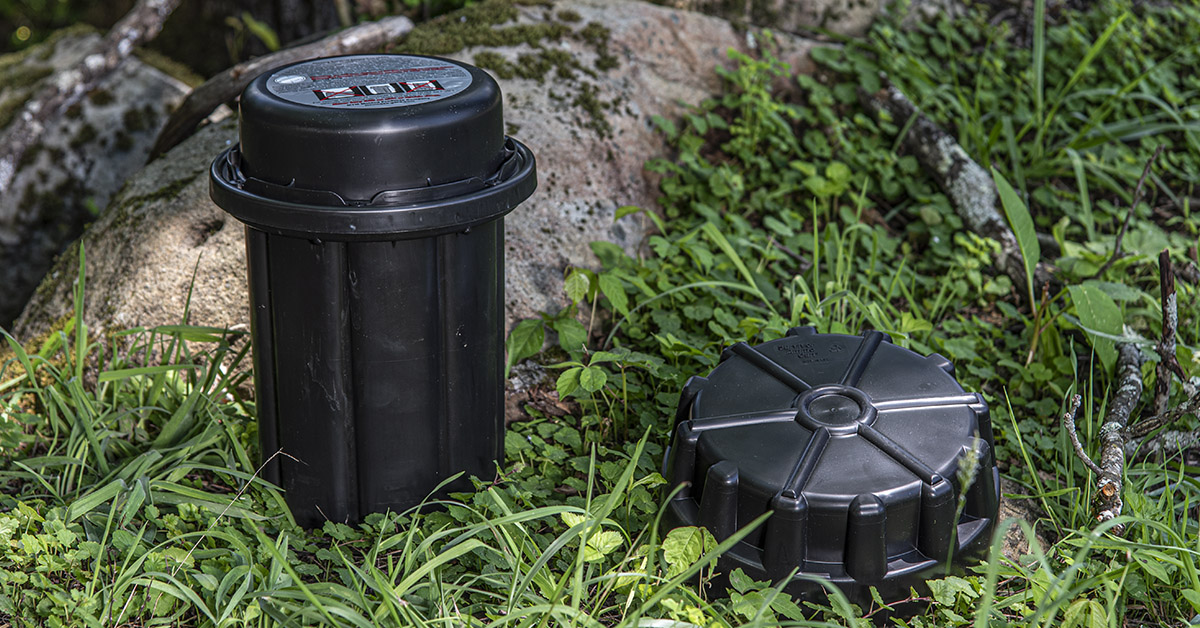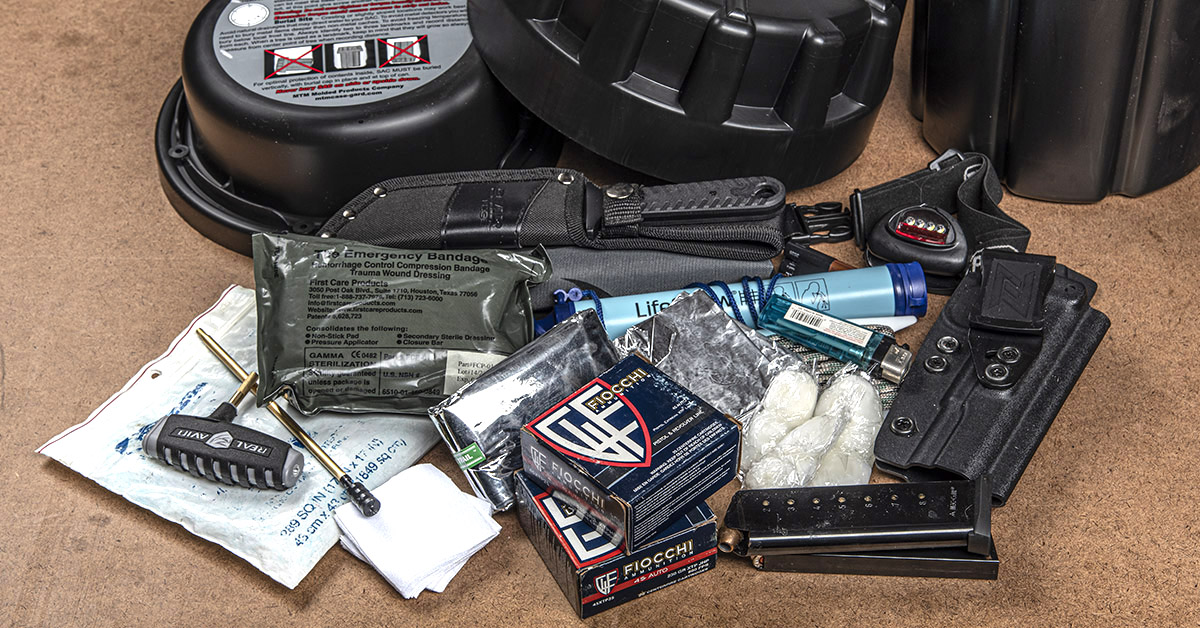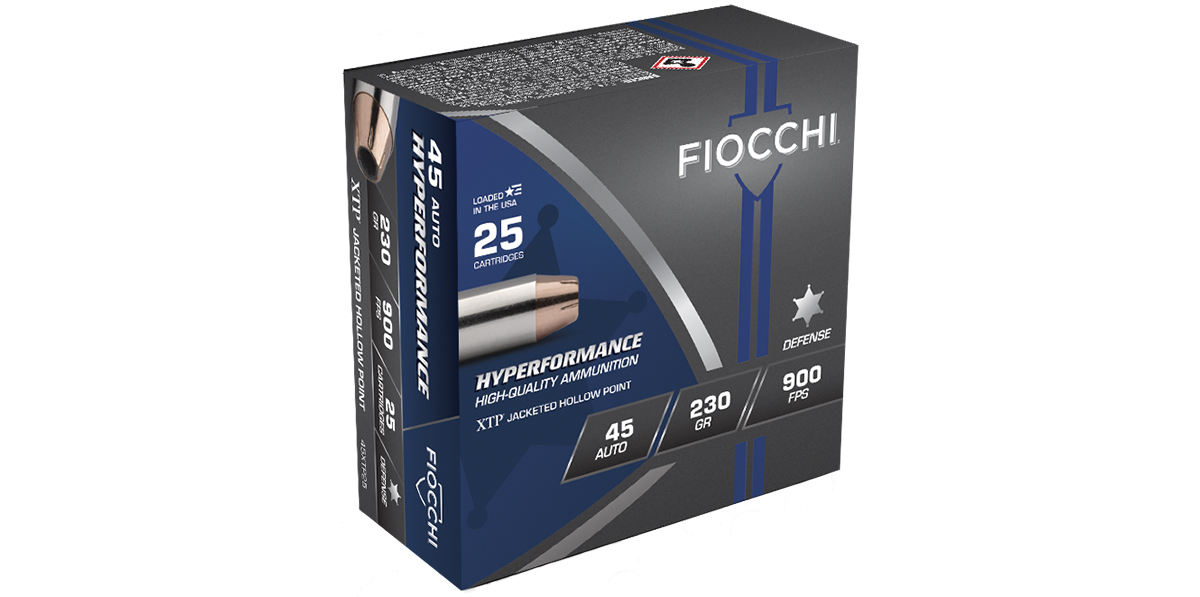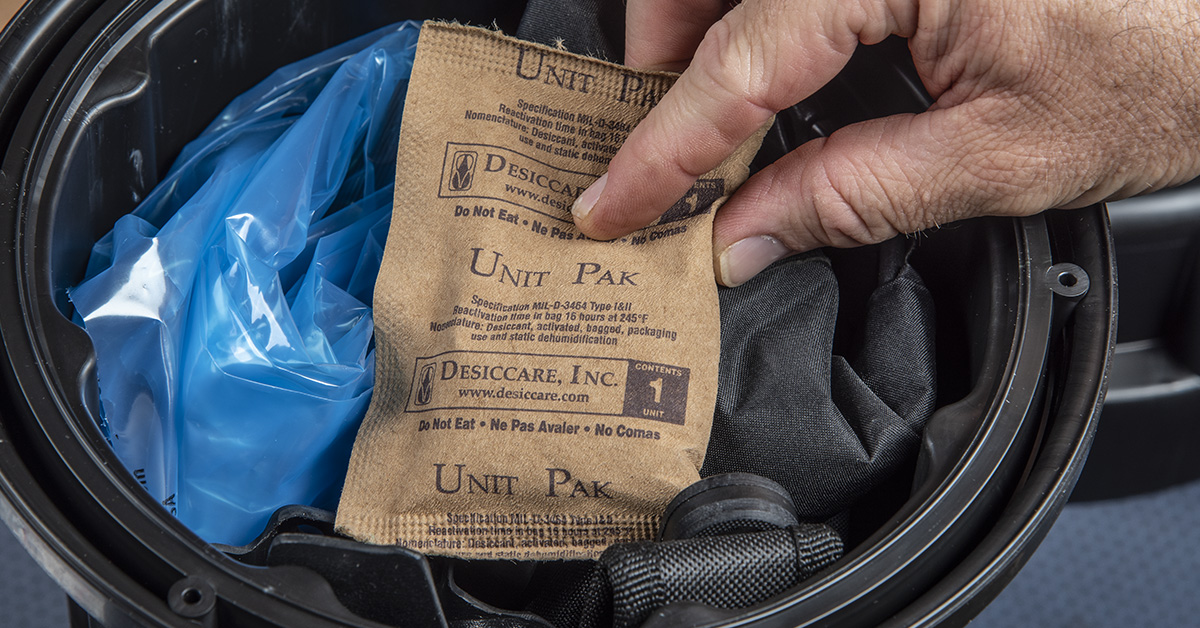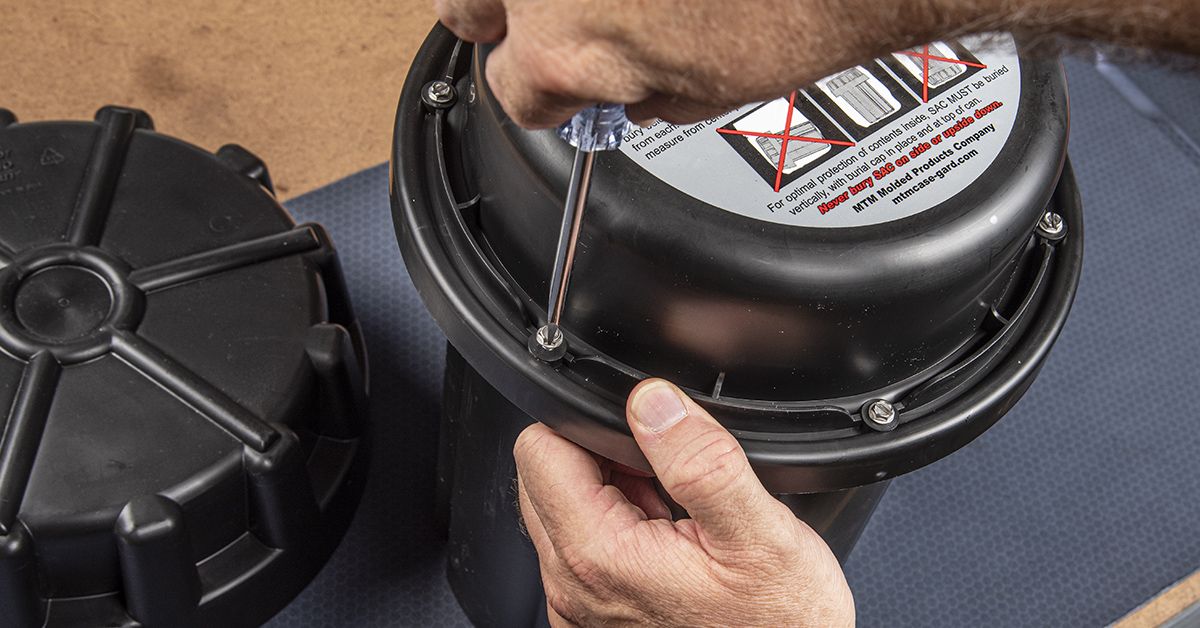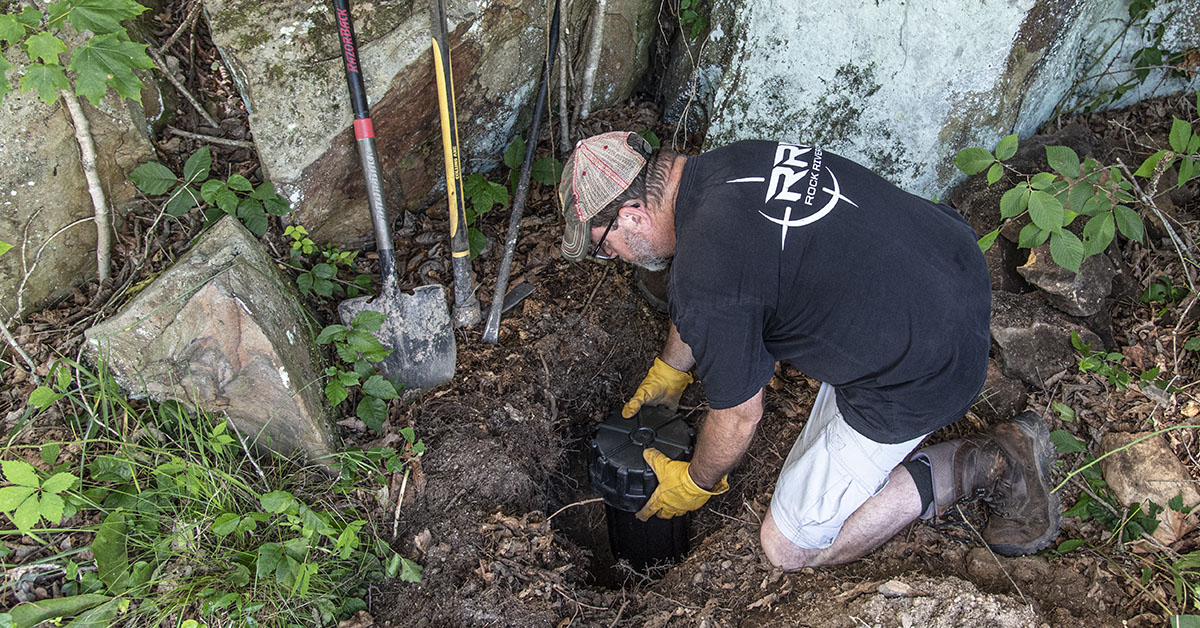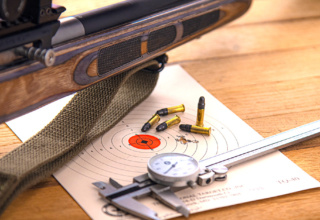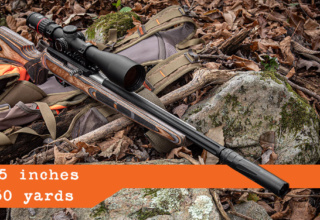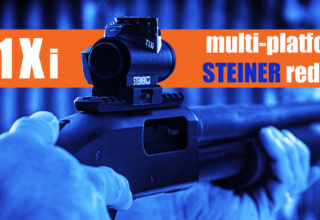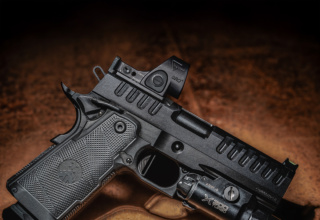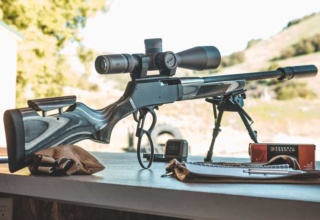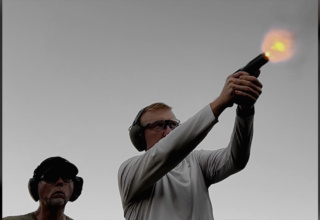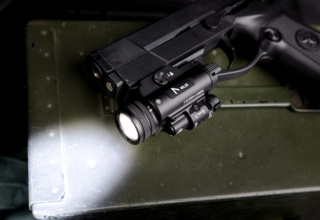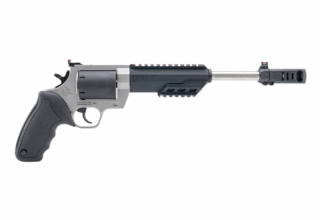The always-present headwinds against gun owners are getting stronger. This may be your smart backup plan.
by Rob Reaser
I’ve seen a common response among gun owners lately to the hypothetical question, “Where are your guns?”
The answer — “I lost them in a boating accident.”
Hey, I’m not saying it didn’t or couldn’t happen, and in my personal, layman interpretation of the treasured 2nd, 4th, and 5th amendments of the Constitution (then again, they ALL are treasured), it’s a pretty good answer. But snarky retorts are not going to win the day. We must guarantee that the tools we need the most when the situation turns grave are at our disposal.
One of my uncles always carried a $100 bill folded crisply and tucked safely in his wallet and he would never touch it. When I learned about this as a kid, I always thought, “Man, if I had $100 dollars…” I asked him about it, and he told me he kept it there because, “I will never be broke.” He and his brothers grew up in a poor, two-room Appalachian household, so I understood even at that young age why he carried that Benjamin around and I’ve never forgotten that lesson.
The same can be said for other essentials in our lives, including guns. With the push from seemingly all corners for more anti-gun laws and the antagonistic view of many in the political class toward individual gun rights it might be time to think about personal defense firearms the same way my uncle thought about that $100 bill — “I will never be defenseless.”
Secreting away firearms and other last-ditch valuables in hidden or buried caches has long been a recognized hedge against “worst case” scenarios. Given the way things are going in this country today, stowing guns, ammunition, or other life-saving gear and supplies no longer seems fringe. Some would call it prudent.
I got to thinking more about this when I acquired a Survival Ammo Can (SAC) by MTM Case-Gard. This is an environment-proof vault designed to protect valuable contents hidden underground. It is a three-piece system consisting of a thick-walled polymer can with an inside dimension of 7 inches wide by 12.4 inches deep. MTM says it will hold 500 rounds of .45 ACP or .223 ammo, or 16 30-round AR-15 magazines. That’s certainly an option for stashing reserve ammunition around your property, but being the pessimistic sort that I am, my mind envisioned the SAC for a more dire application entirely.
Making Ready
“What if,” I pondered, “a criminal group or revolutionary mob flushed me out of my home and off my property?” Sound crazy? If you think so, you haven’t been paying attention to what’s going on in parts of this country. You should also consider the short- and long-game now being played by the gun confiscation crowd.
So, I mapped out the worst-case scenario. What if my firearms were seized or I became cut off from my home and property? What would be the bare-bones minimum I needed to survive until reaching a safe haven or resolving the issue? Further, whatever I would need must fit into the Survival Ammo Can to be stashed somewhere that I could get to it. Here’s what I came up with…
Defense/Food
- Hard-hitting semi-auto handgun
- Two full magazines and an additional 50 rounds of ammunition
- Holster
- Cleaning rod, jag, bore patch, cleaning cloth (more on those to follow)
Survival
- Fixed-blade knife
- Water purifier
- Heat-reflective mylar blanket
- Petroleum-soaked cotton balls
- Paracord
- Butane lighter
- Heavy-duty aluminum foil
- Headlamp and set of spare batteries
- Israeli bandage
- Dry bag to hold everything
This may not seem like much, but you can absolutely make your way for a few days with these marginal supplies. And all this fits with some room to spare in the Survival Ammo Can.
So, let’s walk through my reasoning for choosing these items.
A fixed-blade knife like the Compact Bowie from Bear & Son is the most utilitarian cutting tool you can find. It will make short work of large branches, field-dress game, can be used for hand-to-hand combat, and can be deployed as a spear when affixed to a rod or branch.
Access to clean water is vital, of course. For the minimalist solution, the LifeStraw is the ticket. This mechanical purifier lets you transform a mud puddle into a source of safe drinking water, and it’s small enough to fit in your pocket for instant deployment.
A mylar blanket, or “space blanket,” may not seem like much, but you will be amazed at what this little bundle can deliver in the field. Sit cross-legged on the ground with a very small fire between your legs and wrap the blanket around you for a survivable night even in cold temperatures. Rig it with paracord and a stick and you’ve got a lean-to shelter from inclement weather. I’m not spouting theory here. I’ve used mylar blankets this way on deep-wilderness bivouacs and they work. (I suggest making a bivouac or two for practice and you’ll see just how effective this really is.)
Paracord can serve many purposes. Use it to attach your fixed-blade knife to a branch and you’ve got your spear. Tie it to the corners of the mylar blanket to erect your shelter. To carry my supplies in the enclosed dry bag, I’ll use a length of paracord to make a pouch sling. The uses for paracord in an emergency are many.
Growing up, most of us romanticized about building fires with flint and steel or some other contrivances…until we tried it. In an emergency, there is no time for fooling around. I carry cotton balls that are pre-soaked in Vaseline along with a standard butane lighter on all wilderness outings. One ball ignited with a butane lighter will provide a solid flame for about 15 minutes…plenty of time to flare tinder and get a fire going.
Heavy-duty aluminum foil can serve many vital purposes and it requires nothing in terms of space and weight. Wrap meat or fish with it and toss it on the goals. Ditto for steaming edible wild plants and scavenged vegetables. Craft it into a bowl and heat water, or fashion a cup from it should you come across a spring or seep.
A good headlamp, while not absolutely essential for short-term survival, is definitely something you will want. Load it up with fresh batteries and bundle a set of backup batteries with electrical tape. The electrical tape may come in handy.
While it is not feasible or even possible to pack a full med kit for this emergency scenario, we do need something to address significant hemorrhaging. For this, the Israeli bandage is the go-to. This should be part of any serious med kit or range trauma bag, and I encourage you to read more about this lifesaving device so you know how to quickly deploy it.
Finally, I want a small dry bag to put everything in. As mentioned earlier, you can use your paracord to make a sling for the pouch so you can carry it hands-free.
Firearm Considerations
The firearm you select for caching takes some thought. For starters, this should be considered a “burner gun.” You’re going to bury it underground and leave it there for who knows how long, so it must be one that you are willing to cache. That said, it must also be one that will perform as needed.
For me, an old-school 1911 is the perfect choice. This is an uncomplicated platform able to withstand austere conditions. Chambered in .45 ACP, it is an effective close-quarter threat eliminator.
The choice of ammunition should be suitable for neutralizing threats as well as taking down food. With those two parameters defined, I choose a cartridge like Fiocchi’s Hyperformance Defense – 45 Auto. With its 230 grain XTP bullet propelled at 900 fps, I know I can drop a deer, a hog, or any critter with it and fill my belly.
Although the Survival Ammo Can comes with an O-ring-sealed lid to prevent moisture intrusion, extra steps should be taken when caching weapons. The SAC comes with a Vapor Corrosion Inhibitor bag to line the can along with a desiccant pack to help keep humidity in check, but extra measures are recommended.
For long-term storage in such a hostile environment, the firearm’s metal should be protected. For this, Rig Universal Gun Grease is a good choice. Apply a coat to the metal components, including the barrel bore, and wrap the gun and ammunition in the VCI bag (I’m less concerned about the other items in the can being sealed in the bag since they will be stowed in the dry bag).
Doing this, though, means that the Rig grease must be removed from the firearm before you use it. That is why I include in this cache a gun cleaning cloth to wipe off the grease and a small cleaning rod, jag, and cleaning patches to clean the bore. Rig is a protectant, not a lubricant, so it must be removed before firing the gun.
With everything packed into the can, add the included desiccant pack to help absorb any humidity that may seep in.
Once packed, the lid installs with the supplied stainless-steel screws. Follow the directions to secure the lid for proper sealing of the O-ring. The vault cap will go over the lid to prevent direct contact with the cover soil and seeping ground water.
Location, Location, Location
Where to bury your cache is the next big question. It will, of course, depend on the property you have available and how you plan to access it. Since I live in rural country, the options are plenty. The guiding factor is being able to retrieve the cache undetected should I be cut off from my home or if the home is being surveilled.
Assuming a scenario where I had to retreat with only the clothes on my back, I want to be able to retrieve the cache without tools. That means a relatively shallow pit that I can excavate with my hands and maybe a stick or a flat rock.
Mission accomplished.
While most serious gun owners have, at one time or another, considered the “what ifs” of un-Constitutional gun confiscation and gun rights violations, most of us probably never really believed it could happen or that we would see it in our lifetimes. A discerning eye on what is rapidly transpiring in this country and a bit of projected, logical thinking has disabused many of us of those notions. The “fundamental transformation of America” that we were warned about is afoot and growing at an alarming pace.
Now is the time for us to do more than think about what could happen and start preparing for what may happen.

